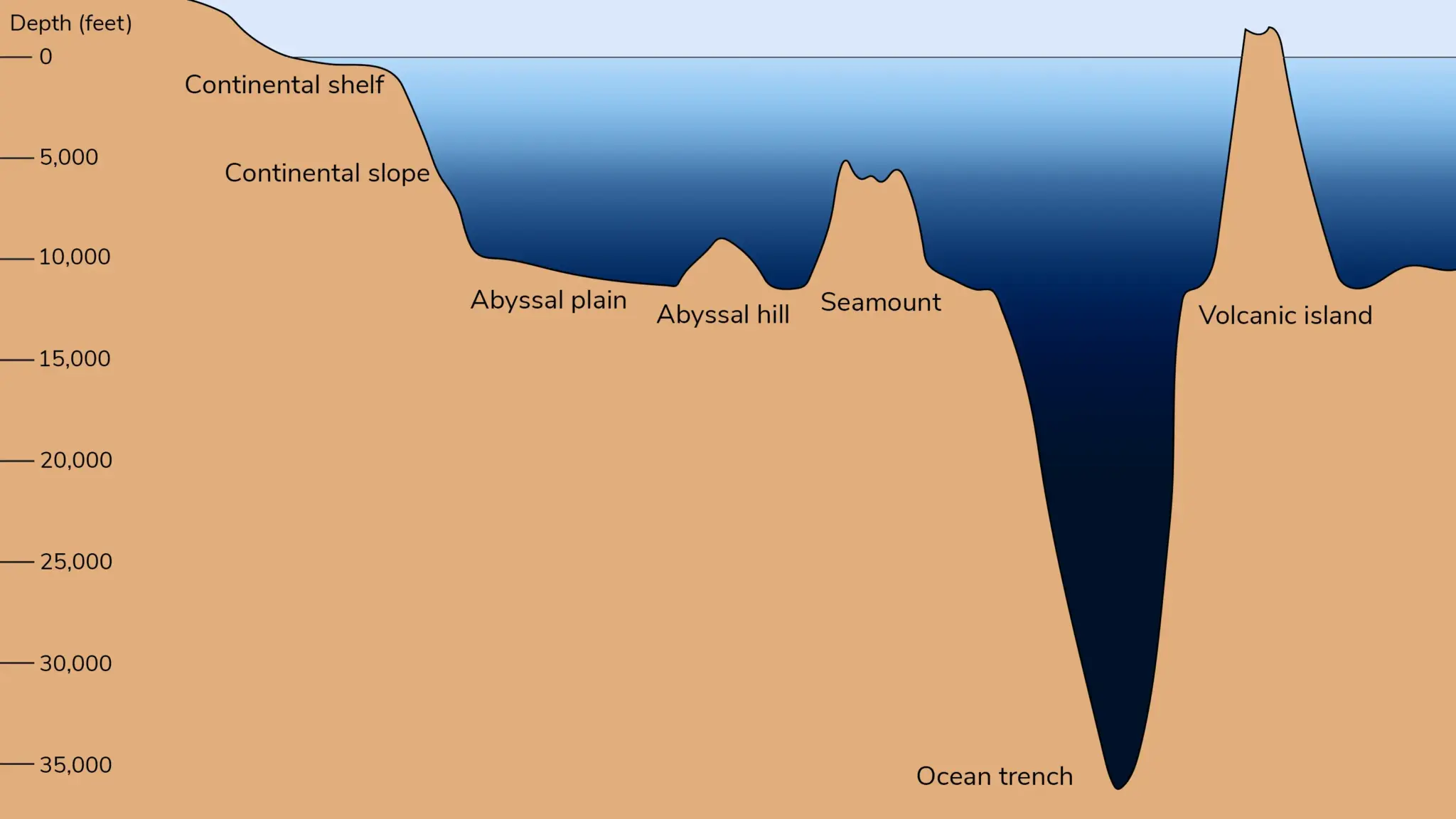About Abyssal Plains:
- The term ‘abyssal plain’ refers to a flat region of the ocean floor, usually at the base of a continental rise.
- Depth variation is usually only as much as 10 to 100 centimeters per kilometer of horizontal distance.
- They can range as far as thousands of kilometers, forming huge plateaus beneath the sea.
- Abyssal plains are found on the ocean floor, usually off the coast of major continental coastlines.
- However, there are significantly more abyssal plains in the Atlantic Ocean than in any other.
- Some can be found within the Indian Ocean, but very few exist in areas within the Pacific Ocean.
- Approximately 40% of Earth’s Ocean floor is covered by abyssal plains.
- The largest Abyssal plain on Earth is called the Sohm plain. This plain can be found in the North Atlantic Ocean. It is 900,000 square kilometres.
- Abyssal plains occur at depths greater than 6,500 feet (2,000 meters) below sea level and are underlain by oceanic crust composed primarily of basalt, a dark-colored volcanic rock rich in iron- and magnesium-silicate minerals.
- The basalt is covered by layers of sediment deposited by deep ocean turbidity currents, the shells of marine plants and animals that have fallen down from the ocean’s upper levels, or a combination of both.
- Other minor components of abyssal plain sediment include wind-blown dust, volcanic ash, chemical precipitates, and occasional meteorite fragments.
- Scattered across abyssal plains are abyssal hillsand underwater volcanic peaks called seamounts.
- On the other side of the plain is usually an oceanic trench, where the seafloor dramatically plummets.
Q1: What is continental rise?
Continental rise is a major depositional regime in oceans made up of thick sequences of continental material that accumulate between the continental slope and the abyssal plain. Continental rises form as a result of three sedimentary processes: mass wasting, the deposition from contour currents, and the vertical settling of clastic and biogenic particles.
Source: Mysterious Unknown Deep-Sea Creatures Discovered on Abyssal Expedition
Last updated on December, 2025
→ Check out the latest UPSC Syllabus 2026 here.
→ Join Vajiram & Ravi’s Interview Guidance Programme for expert help to crack your final UPSC stage.
→ UPSC Mains Result 2025 is now out.
→ UPSC Notification 2026 is scheduled to be released on January 14, 2026.
→ UPSC Calendar 2026 is released on 15th May, 2025.
→ The UPSC Vacancy 2025 were released 1129, out of which 979 were for UPSC CSE and remaining 150 are for UPSC IFoS.
→ UPSC Prelims 2026 will be conducted on 24th May, 2026 & UPSC Mains 2026 will be conducted on 21st August 2026.
→ The UPSC Selection Process is of 3 stages-Prelims, Mains and Interview.
→ UPSC Result 2024 is released with latest UPSC Marksheet 2024. Check Now!
→ UPSC Prelims Result 2025 is out now for the CSE held on 25 May 2025.
→ UPSC Toppers List 2024 is released now. Shakti Dubey is UPSC AIR 1 2024 Topper.
→ UPSC Prelims Question Paper 2025 and Unofficial Prelims Answer Key 2025 are available now.
→ UPSC Mains Question Paper 2025 is out for Essay, GS 1, 2, 3 & GS 4.
→ UPSC Mains Indian Language Question Paper 2025 is now out.
→ UPSC Mains Optional Question Paper 2025 is now out.
→ Also check Best IAS Coaching in Delhi

















